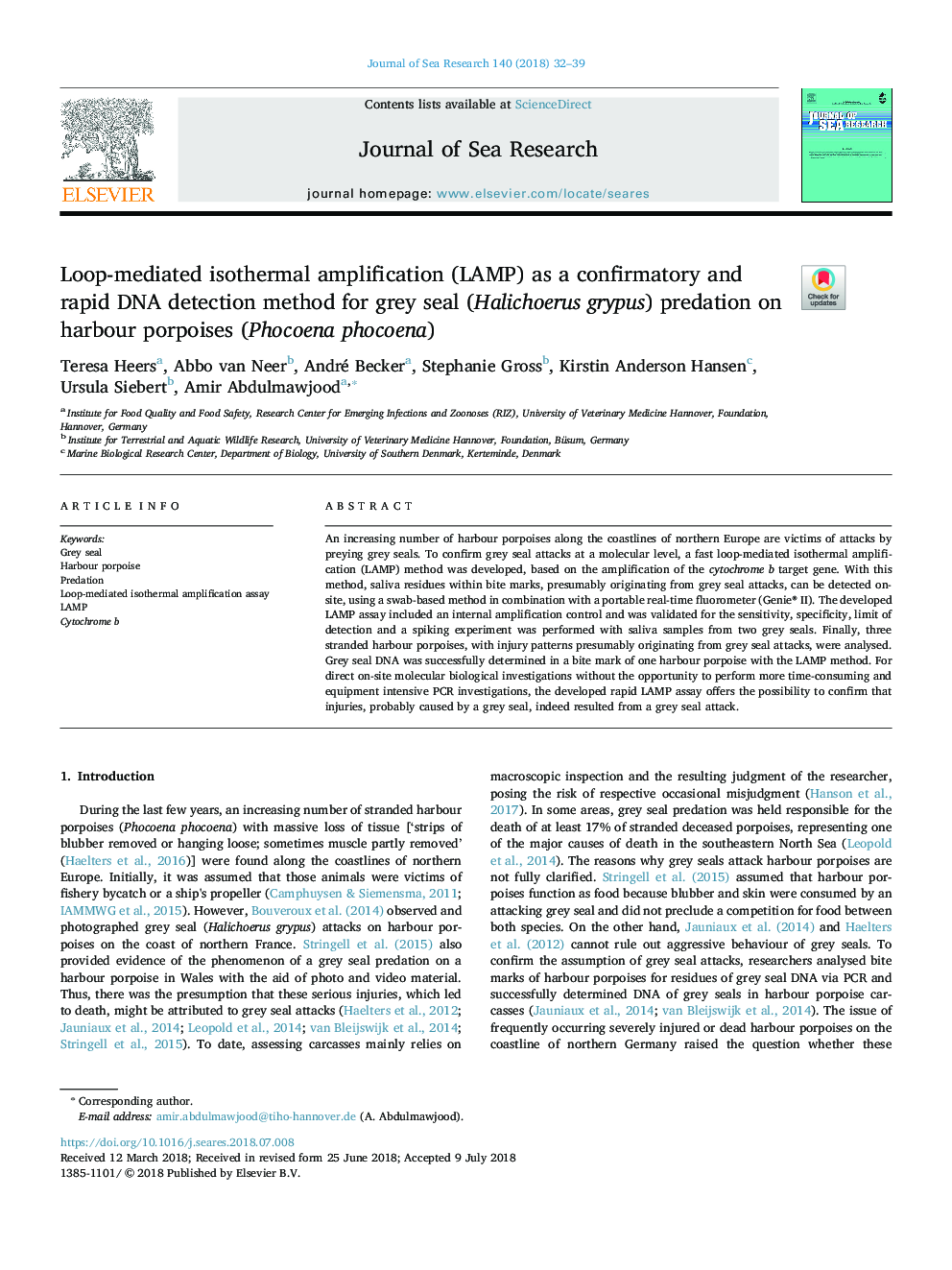| Article ID | Journal | Published Year | Pages | File Type |
|---|---|---|---|---|
| 8886085 | Journal of Sea Research | 2018 | 8 Pages |
Abstract
An increasing number of harbour porpoises along the coastlines of northern Europe are victims of attacks by preying grey seals. To confirm grey seal attacks at a molecular level, a fast loop-mediated isothermal amplification (LAMP) method was developed, based on the amplification of the cytochrome b target gene. With this method, saliva residues within bite marks, presumably originating from grey seal attacks, can be detected on-site, using a swab-based method in combination with a portable real-time fluorometer (Genie® II). The developed LAMP assay included an internal amplification control and was validated for the sensitivity, specificity, limit of detection and a spiking experiment was performed with saliva samples from two grey seals. Finally, three stranded harbour porpoises, with injury patterns presumably originating from grey seal attacks, were analysed. Grey seal DNA was successfully determined in a bite mark of one harbour porpoise with the LAMP method. For direct on-site molecular biological investigations without the opportunity to perform more time-consuming and equipment intensive PCR investigations, the developed rapid LAMP assay offers the possibility to confirm that injuries, probably caused by a grey seal, indeed resulted from a grey seal attack.
Keywords
Related Topics
Physical Sciences and Engineering
Earth and Planetary Sciences
Oceanography
Authors
Teresa Heers, Abbo van Neer, André Becker, Stephanie Gross, Kirstin Anderson Hansen, Ursula Siebert, Amir Abdulmawjood,
